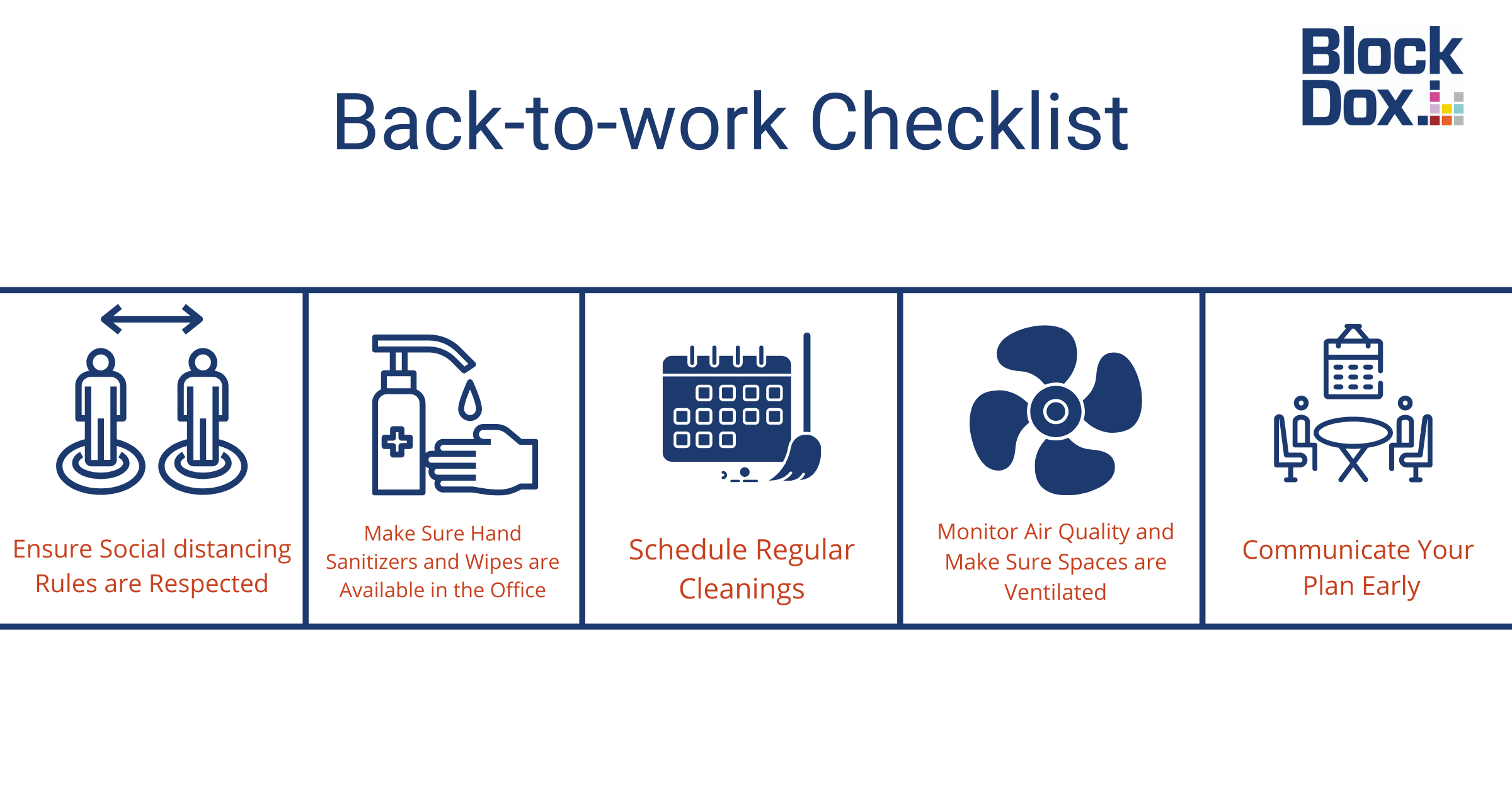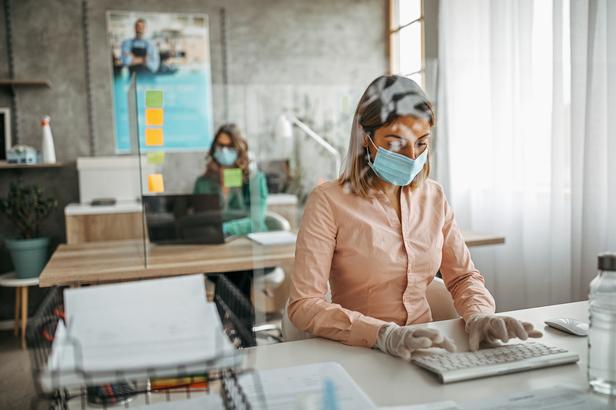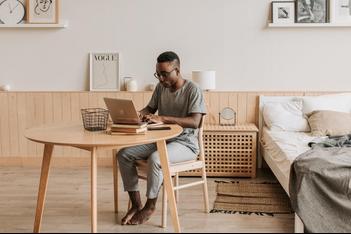In the midst of a pandemic, companies can’t afford to compromise their employees’ health and safety. It’s, therefore, highly important that your ‘back-to-work' plan mitigates risks associated with the spread of the virus.
What should you do to reassure your employees that it is safe to go back to work?
What should your strategic ‘return to work’ response plan look like?
BlockDox’s here to give you some useful pointers.

Social distancing
COVID-19 is mostly transmitted from person to person via droplets during close proximity interactions. Therefore, ensuring that the required 2-meter physical distance is maintained throughout your building is of utmost importance. However, it can be difficult to enforce this rule especially if you have an open plan office where people ‘hot-desk’. The latter can increase the risk of infections as desk spaces are shared amongst employees. In this case, we’d recommend planning a seating arrangement.
Making use of signages might also help employees navigate the building safely without overcrowding certain areas such as meeting rooms.
Do not bring back all of your workforce at once but only 30% to begin with. Select carefully key employees who would benefit the most from going back to the office. Bear in mind that some workers have childcare duties and might be better off working from home.
Air quality and ventilation
21st century curse or blessing, it has become a fact of life that most of us spend our time indoors. Good ventilation is therefore essential for your team to stay healthy and productive. A recent scientific paper has pointed out that ‘the virus is less likely to be transmitted in well-ventilated areas’ (HM Government, 2020). This finding highlights that good ventilation and air quality are crucial to minimise the risk of airborne transmission. You’ll also improve the overall health of your building by reducing the likeliness of your employees catching the ‘sick building syndrome’ (Harvard Business Research, 2017), which is a common illness employees suffer from when buildings are poorly ventilated.
In addition, it has been proven that good ventilation increases employees’ performance by 8% which would equate to about $6500 saved per worker per year (MacNaughton P, Pegues J, Satish U, Santanam S, Spengler J, Allen J. Economic, Environmental and Health Implications of Enhanced Ventilation in Office Buildings. 2015 Nov).
Need help with your ‘return-to-work’ plan ---> Book a Meeting With Our Sales Representatives Now!
Regular cleaning
COVID-19 is known to stay on cardboard for 24 hours and for up to 3 days on stainless and plastic surfaces (National Institutes of Health, 2020). This means that the virus can spread rapidly via door handles, workstations, computers, sink and tables. These are items and surfaces commonly used in a work environment. The findings undoubtedly highlight the importance of scheduling regular deep cleaning and complete disinfection of these areas to decrease the risk of potential infection.
It’s also highly critical that you make gloves, hand sanitisers, face masks and wipes widely available throughout the office for employees to use.
Above all, communicate clearly what your ‘back-to-work’ plan will be to your employees at least three weeks before reopening. Allow everyone to freely address their concerns and most importantly, be flexible with your approach.
What does your ‘return to work’ response plan look like? BlockDox can help your business reopen safely. Contact us here for more information.












